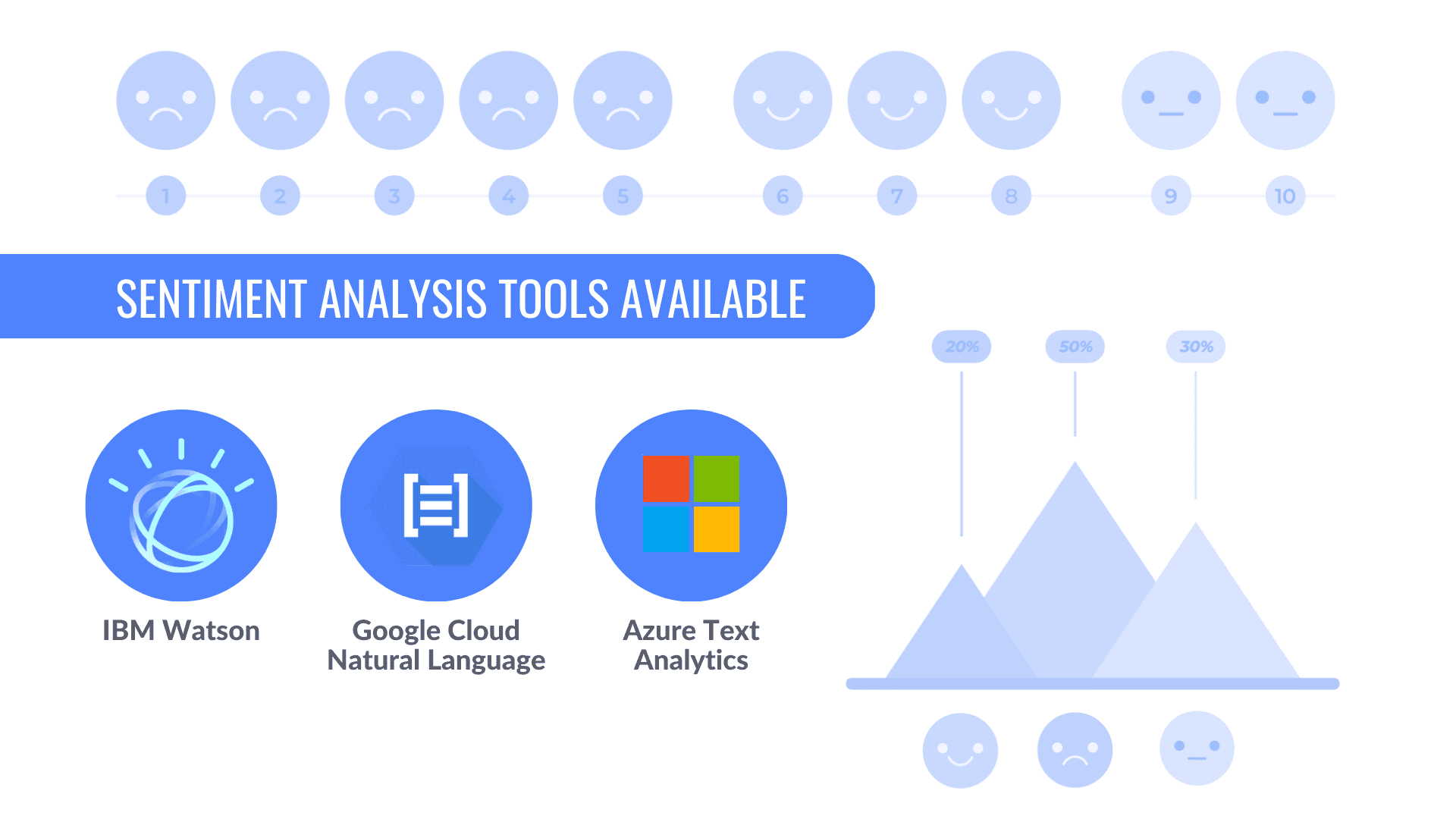Are you tired of playing guessing games with your marketing strategy? Try customer sentiment analysis. It can help you take the guesswork out of your marketing efforts.
And now more than ever, it’s important to use your resources as effectively as possible.
By analyzing customer feedback and interactions, you can understand customer sentiment – how customers feel – toward your brand. This can help you make better marketing decisions based on them. After all, the customer is king, and it’s important to keep them happy.
In this blog, we’ll show you how you can use customer sentiment analysis to crush your marketing goals. Let’s dive in!
What is customer sentiment analysis?
In today’s digital world, customer feedback is more important than ever before. Companies that understand and act on customer feedback can meet their customers’ needs better. They are also better positioned to build lasting relationships with them. But how exactly do they do this? You guessed it – customer sentiment analysis.
Customer sentiment analysis (CSA), also known as social listening, is the process of using artificial intelligence (AI) and natural language processing (NLP) to analyze customer feedback and online interactions. This can include reviews, social media posts, customer service chats, and more. In recent years, AI has had a great impact on social media marketing and CSA is the perfect example of it in action.
The goal of CSA is to understand how customers feel about a brand, product, or service. You can then use that information to improve the customer experience.
There was a time when assessing customer feedback and star ratings would be a good enough CSA strategy. Sadly, that isn’t the case anymore.
Customers now have several ways of expressing their opinions about your brand. These ways include, to name a few, social media posts, blogs, and Google reviews. An effective, modern CSA strategy should consider these to produce more accurate results.
Steps for building a customer sentiment analysis framework

Here’s how you can build an effective CSA strategy for your business in six easy steps:
1. Define your research goal
Before starting the analysis, you need to define the purpose of your research.
What are you trying to achieve with your analysis? What questions do you want to answer? This will help you focus your research and ensure that you collect the right data.
Some good examples of solid CSA research goals are making changes to the company website to make it more user friendly, and enhancing in-store shopping experiences.
2. Choose your data sources
Customer sentiment analysis can be conducted using various data sources such as:
- Customer feedback forms
- Online reviews
- Social media posts
- Chat transcripts
Choose the sources that are most relevant to your research objective.
For example, if you wish to make changes to your website, it would be wise to analyze online reviews. This includes on-site reviews, Google reviews, and any mentions of your website on social media and blog pages.
Similarly, if you wish to enhance your in-store shopping experiences, you’re better off only analyzing in-store feedback forms and point of sales (POS) customer feedback.
3. Collect and clean the data
Once you have identified your data sources, collect the data and clean it. This involves removing irrelevant information, such as spam, duplicate posts, and off-topic content.
You can also automate this process using data-cleaning tools like Google’s OpenRefine.
4. Conduct sentiment analysis
CSA uses machine learning algorithms to analyze feedback and identify the sentiment expressed.

There are several sentiment analysis tools available, such as IBM Watson, Google Cloud Natural Language, and Azure Text Analytics. Once you’ve gathered your insights, consider visualizing the data using tools like Power BI. You can enhance your skills by taking a Power BI course, which will help you create impactful visualizations to better understand customer sentiment
5. Interpret the results
One powerful way to process and visualize the insights gained from sentiment analysis is through embedded business intelligence tools. Consider enhancing your skill set with an online course on Power BI. This will allow you to create and understand visual representations of your data, making it easier to identify patterns and trends during the interpretation phase.
After conducting sentiment analysis, you need to interpret the results. This involves analyzing the data to identify patterns, trends, and insights.
You can use data visualization tools, such as charts and graphs, to help you better understand the data. You can also hire data analysts to handle this stage of the CSA process.
6. Take action
Finally, use the insights you have gained from your analysis to take action.
This could involve developing targeted marketing campaigns, improving your products or services, or addressing specific customer concerns.
All your actions should bridge the gap between what your customers want and what you currently offer them.
What are the benefits of customer sentiment analysis?
Here’s why you should consider setting up a customer sentiment analysis strategy for your business.
Improved customer experience
By analyzing customer sentiment, you can identify areas where you need to improve. For example, if your customers complain about long wait times on the phone, consider setting up a more efficient call center solutions with automated answering machines.
Or use a conversational chatbot like Drift or Intercom on your website that guides people to help articles that answer the top five frequently asked questions that your customer support team receives.
You can also use sentiment analysis to better understand your customers’ wants and needs. Knowing how your customers feel about different parts of their shopping experience, like finding the right products or applying for returns, can help you improve the customer experience.
Better product development
CSA can provide insights into what your customers like and dislike about a product. Not everyone enjoys hearing what people don’t like about the products they build or market.
However, it’s some of the most valuable qualitative data you can ask for. Why?
Because this information can be used to make your products and services solve your customers’ problems in even better ways.
For example, if customers complain about a difficult-to-use user interface (UI) in your products, you can use that feedback to make changes.
Moreover, leveraging CSA can also help identify new product opportunities. By understanding your customers’ pain points and desires, you can tailor your product development efforts to meet their needs better and faster.
More effective marketing
By analyzing customer sentiment, companies can create targeted marketing campaigns that resonate with their audience.
For example, if your target demographic is college-age adults who are fashion-conscious but can’t spend as much on clothes, you use certain words or phrases like ‘latest,’ ‘high-quality,’ and ‘affordable’ in marketing materials to better connect with them.
When your target customers see everyday words from their vocabulary used in your marketing, it encourages them to interact more with your brand.
Customers who personally identify and feel comfortable with your brand are much more likely to keep shopping with you.
Competitive advantage
Customer sentiment analysis can provide insights into how competitors are perceived. So if customers praise a competitor for a certain aspect of their product, your company can use that feedback to identify areas where you need to improve.
Additionally, CSA can help you stay ahead of the competition by identifying new trends and customer preferences. By being the first to respond to trend changes, you can differentiate your products and services from your competitors. This can give you a sustainable competitive advantage and help to position your company as a leader in your industry.
Better decision-making
Customer sentiment analysis provides data-driven insights that can inform business decisions. If you’re thinking of launching a new product, CSA can help you identify whether demand for the product actually exists.
Furthermore, customer sentiment analysis can help you make more informed decisions about pricing, marketing, and customer service.
By understanding how customers perceive your brand and products, you can tailor your sales and marketing strategies to better meet their needs and preferences. This can lead to more effective decision-making throughout the company and improved customer satisfaction.
What has customer sentiment analysis got to do with marketing?
You can’t make wise marketing decisions just by looking at how many clicks, comments, or shares you get. They’re important, no doubt. But they don’t tell the whole story.
For instance, a customer sharing a post about your product does not translate to a positive review. They could, in fact, be expressing frustrations about your brand’s product or service.
Customer sentiment analysis uses machine learning to help you analyze the real feelings of your customers. Responding to how customers feel can help you gain and retain customers for your business.
Besides successful customer retention, CSA can also prove to be useful in reputation management and evaluation of successful market campaigns. Here’s how:
Targeted messaging
Targeted messaging and marketing are some of the best ways for your business to generate more revenue. A 2021 report by McKinsey and Company states that 76% of consumers are more likely to shop with brands that provide personalized offers and recommendations.
Further, another survey by Porch Group Media found that 69% of global companies rate personalizing their customer experiences as a top business priority. These statistics make it clear that targeted messaging is an effective marketing technique.
Customer sentiment analysis can help marketers create targeted messaging that speaks to their customers’ needs and concerns.
Suppose your company, for example, notices that customers are expressing frustration with the quality of your customer service. In that case, you can create messaging highlighting your commitment to exceptional customer service.
Similarly, if customers praise a particular feature of a product, you can create messaging that highlights that feature and positions it as a key selling point.
Product development
CSA can provide insights into what customers like and dislike about a product.
For example, if you notice that customers are complaining about a certain aspect of a product, such as its durability or ease of use, you can use that feedback to improve the product.
Additionally, if customers often request a certain feature that is not currently offered, you can use that feedback to develop a new product that better meets customer needs.
Reputation management
Negative reviews or social media posts can damage a company’s reputation. You never know which bad Twitter review gains traction and puts you right in the eye of a Twitter storm.
By monitoring customer sentiment, you can respond to negative feedback, controlling its impact on your reputation. For example, if a customer posts a negative review about a product on social media, you can respond with an apology and a plan to address the issue, demonstrating your commitment to customer satisfaction.
A happy customer on the internet will always help you gain more, and how you respond to negative reviews determines how happy your customers are with your brand and its services.
Competitive analysis
Customer sentiment analysis can also provide insights into how a company’s competitors are perceived. It can help you understand data about your competitor’s product. You can then use that information for your own product.
Similarly, if customers find a competitor’s product superior, you can use that feedback to improve your product. Competitive analysis aims to ensure your brand has a strong hold over its market.
An extensive competitive analysis campaign can help you find gaps and areas of improvement in the general market and your own products. You can use this information to capitalize on market opportunities and find new ways of delivering value to your customers and generating revenue.
Boost your marketing with customer sentiment analysis
Investing in customer sentiment analysis is the way to go if you want to take your marketing to new heights.
While the concept’s original purpose was to enhance customer relationships, it is now an important part of any effective marketing strategy. CSA can help you understand where you stand in the market and how to build a better brand reputation.
Equipped with this knowledge, you can craft marketing campaigns that attract customers.
We at Bulk.ly help marketers automate their social media campaigns. When coupled with your CSA information, Bulk.ly’s features, like drip scheduling and hashtag assignment, can help you maximize your reach on leading social media platforms.
We’ve scheduled over 1 million posts for the smartest social media marketers in the world. Sign up for a free seven-day trial to see the difference for yourself.


